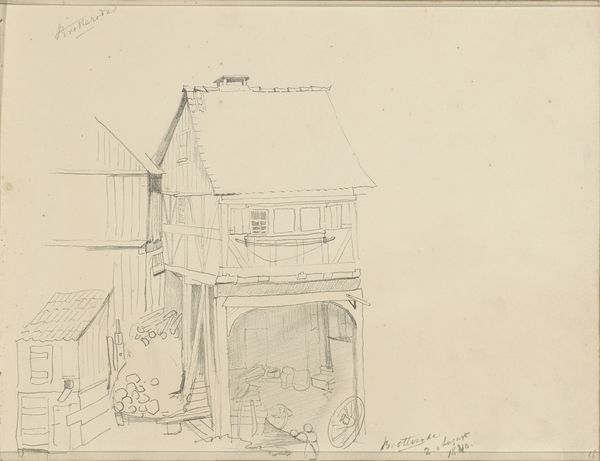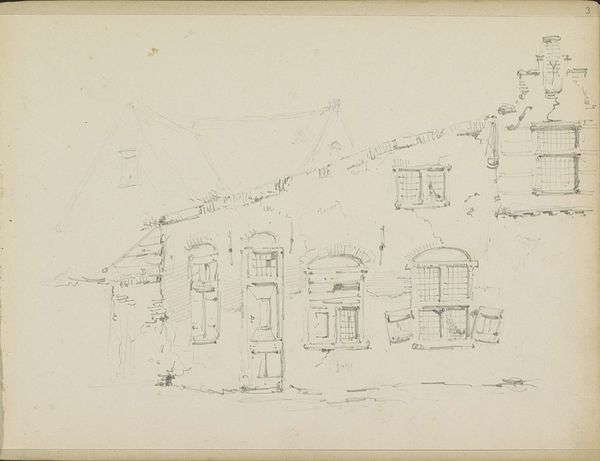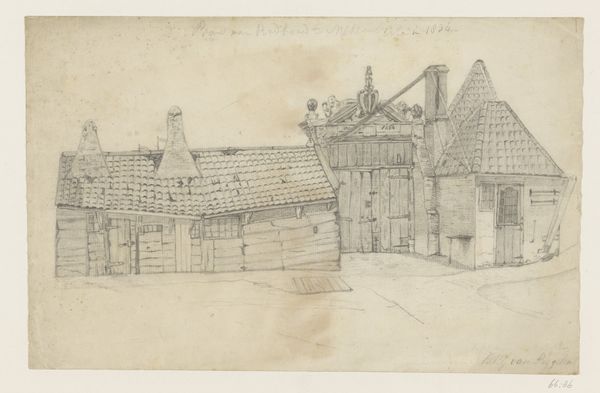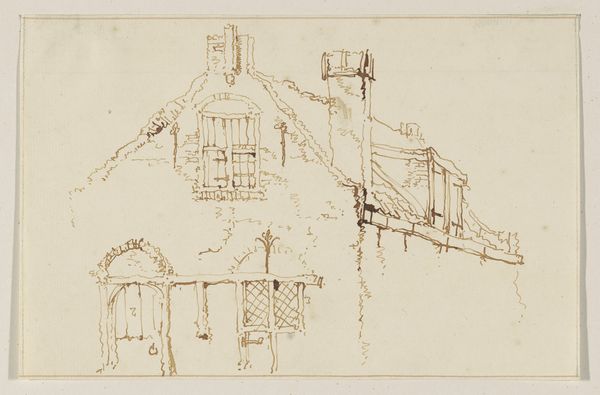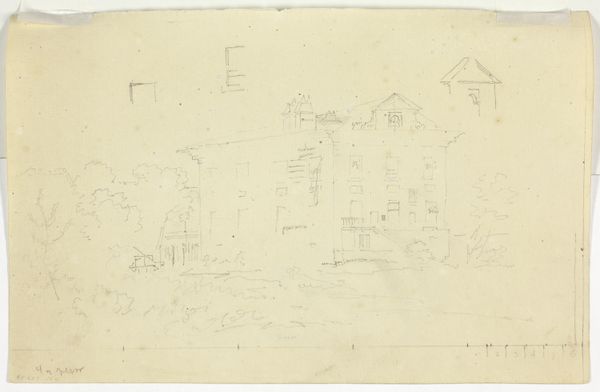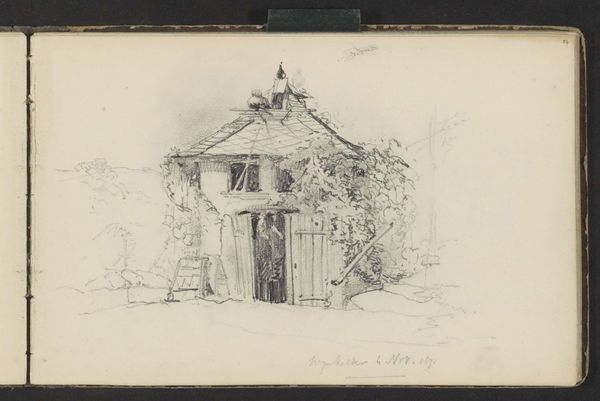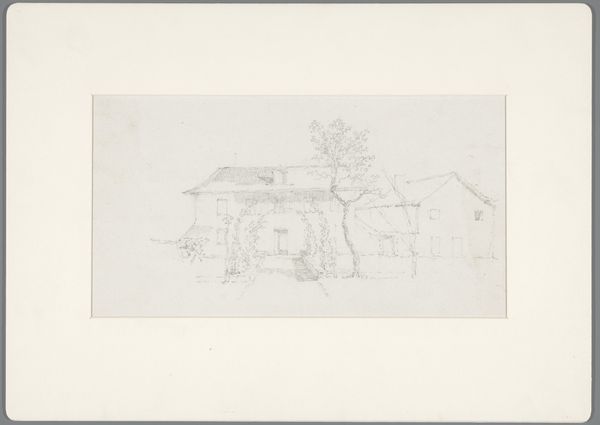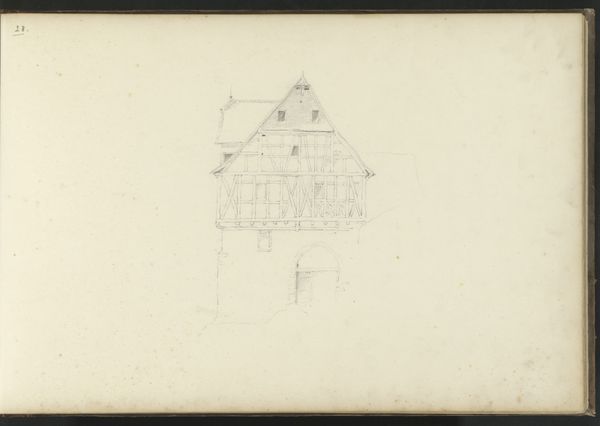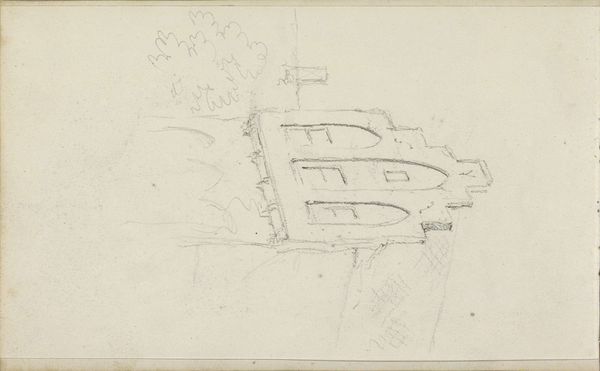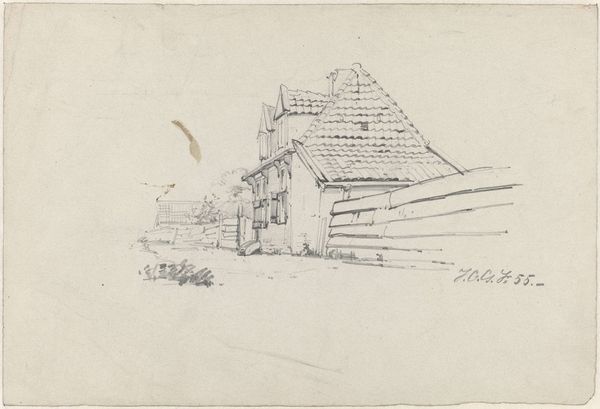
Copyright: Public Domain
Editor: Here we have Nikolaus Hoff's "Ein Haus bei Florenz auf dem Weg nach Fiesole," a pencil drawing from 1825, rendered on paper. There's a beautiful stillness to it, a real sense of observation. How do you read the composition? Curator: Precisely. The charm lies in its unassuming structure and meticulous draftsmanship. Note the geometrical facets created with the lines defining architectural features like the staircase and walls. These shapes contribute to the overall rhythm of the design, offering a robust, functional appeal that is independent of any romanticized setting. The paper's raw state, visible within the pencil marks, acts as another dimension of surface. Editor: That's interesting. It's like the imperfections become part of the picture's formal language. The roughness of the pencil work contributes to its character. It keeps things engaging even in its austerity. Curator: Precisely, how do these lines coalesce and converse in order? The linear technique defines every texture, including those representing stonework or a distant tree. Without color, form attains paramount expressive impact, making a direct dialogue between what we perceive of and what we conceptualize as form and volume. Editor: I suppose focusing on line and form makes you strip away other potentially distracting features, focusing our attention solely on the structure before us? What about Hoff's signature? Where does that fit? Curator: An astute query! The signature itself may disrupt visual coherence if perceived outside its semiotic capacity within our reading – rather, observe its alignment alongside other angles from foundational objects presented; the house sits naturally given such spatial arrangements of planar organization in a world both rational as much beautiful here then! Editor: Thank you; viewing this within the scope you outlined really heightened how effectively simple lines can construct meaningful visual stories about places. Curator: Indeed, seeing art this way allows for timeless appreciations that survive beyond fashionable trends that alter over successive times – it lives throughout its forms forever then practically ever.
Comments
No comments
Be the first to comment and join the conversation on the ultimate creative platform.
